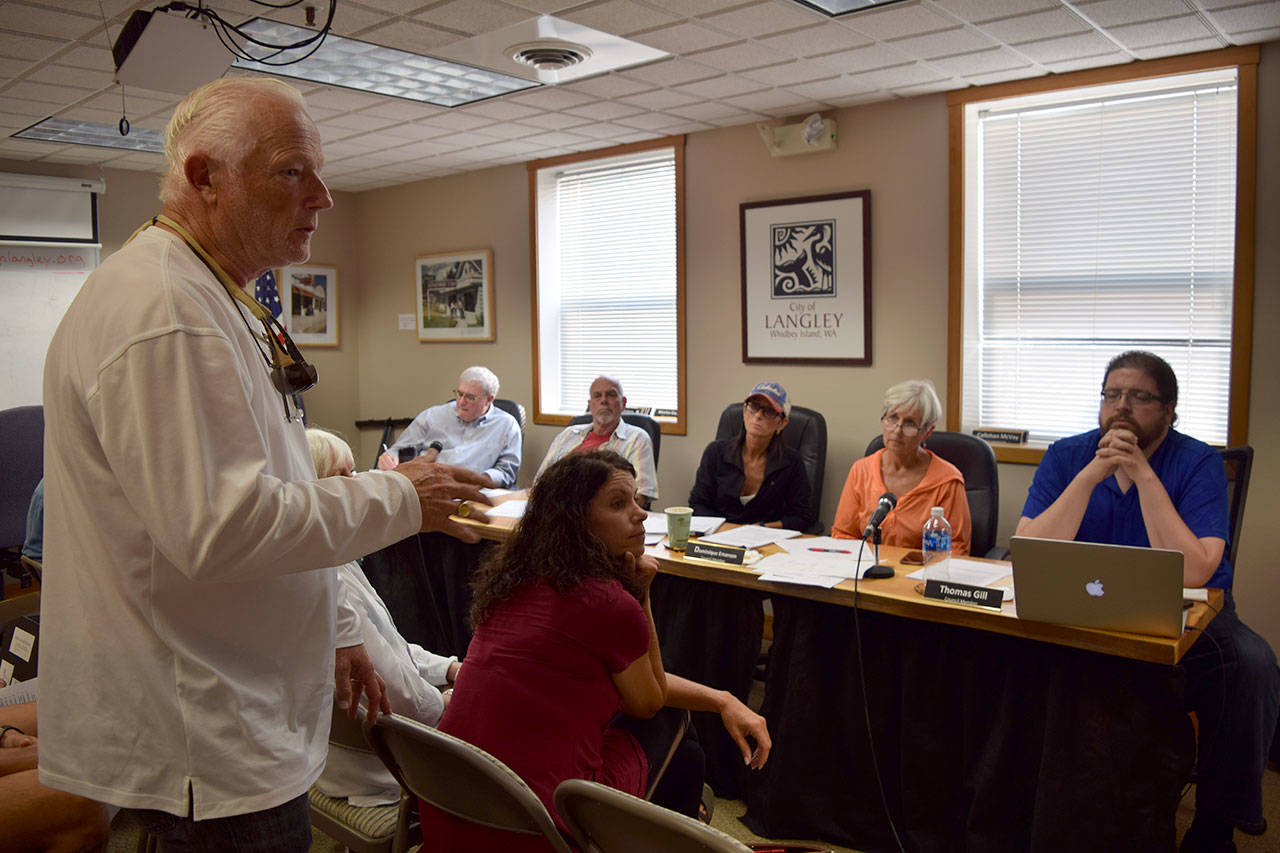When Greenbank artist and sculptor Dale Reiger started working on a temporary sculpture for Langley’s Clyde Alley, he thought his work was insured by the city.
It’s not, and when he found out, he pulled the plug. His subsequent refusal to complete the installation by the specified Aug. 18 deadline resulted in the Langley Arts Commission’s proposal this week to have taxpayers foot the bill for insuring temporary works of public art. Members of the arts commission claimed artists expect to be insured, as galleries do the same. The city council discussed the issue on Monday, but no decision was made.
A special session has been set for Aug. 15 to discuss the issue further and give city officials a chance to gather price estimates.
The city began its temporary public art program in 2015 when the Langley Arts Commission was established, according to commission chairman Frank Rose.
“I’m asking the city to approve a motion that requires the city to provide damage insurance for the City of Langley’s temporary art installations, and that Dale Reiger’s art be installed in Clyde Alley on Aug. 18, like it’s scheduled to be,” Rose said. “The way it’s written (the contract), the artist takes all the risk, and if anything happens, the city could actually sue the artist.”
The confusion over whether artists are covered while participating in the temporary public art program stems from an error in the city’s request for proposal (RFP) calling on artists to enter into the outdoor sculpture competition. The request stated works of art would be insured by the city, and responsibility for maintenance, repairs or accidents during exhibition would fall on the city’s lap.
However, after taking a look at the contract he had to sign with the city, Reiger noticed that wasn’t the case. Rose said at the meeting he understands these errors can happen, but wanted Langley to follow the example of nearby cities in providing insurance.
“From the arts commission’s view, we would simply like to be treated like other nearby cities like Puyallup, Auburn, La Conner and Anacortes treat their artists,” Rose said. “They all have different spins to their coverage, but it’s coverage nonetheless.”
According to Moe Jerome from Whidbey Art Gallery, ensuring artists that their public works are insured could be an important piece of upholding Langley’s status as a thriving artist community. Doing so would encourage artists to enter into the outdoor sculpture competition.
He pointed out the city has around 50 permanent sculptures, some donated and some purchased by the City of Langley, but none of them are insured, he said. He added if something happened to a sculpture such as Georgia Gerber’s Boy and Dog sculpture on First Street, it could bring up an issue for the city.
“One of the ways we can sustain our art image around not only Seattle, but the Northwest and around the world, is to have this continuous sculpture, program going,” Jerome said. “We need art in our community, and we do have the artists to keep that going.”
Although some city officials questioned why Reiger started working on his sculpture before signing the contract, the city council was receptive to the arts commission’s proposal. The biggest question, though, remained the cost of insuring the public displays. The city council voted to wait on a decision until they look into the cost of coverage.
Given the set installment date on Friday, Aug. 18 is before the meeting, the city council elected to host a special session at 1 p.m. Aug. 15 at Langley City Hall.
Rose believes the city is making an “honest effort” to reconcile this and encourage artists to continue submitting their work.
“We are an arts community, and we want to continue to foster art,” Councilman Burt Beusch said. “It’s what sets us aside from other cities.”



